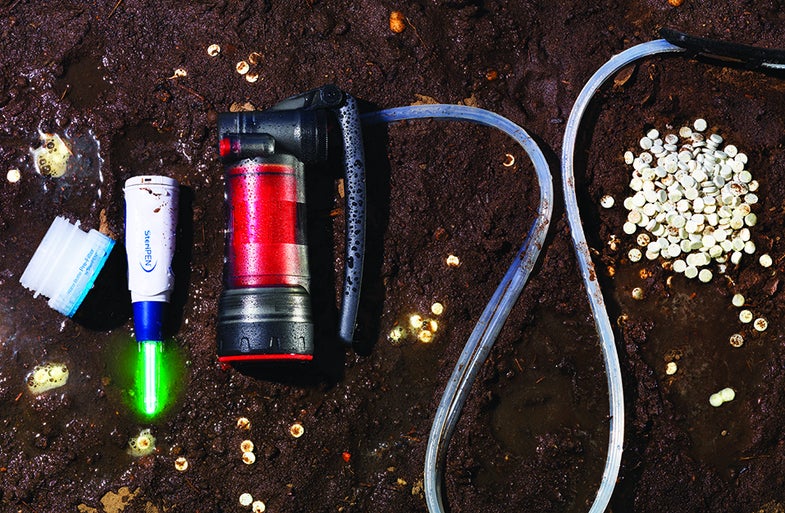Three ways to safely drink found water
Water is vital. Giardia infection is ... not.

We may earn revenue from the products available on this page and participate in affiliate programs. Learn more ›
A go-bag for a natural disaster, zombie apocalypse, or weekend campout most definitely doesn’t include the five liters of cooking and drinking water each person needs daily. Found water, though, is filled with dirt, debris, and critters that could make you sick—even kill you. Still, there are ways to make even a mud puddle potable.

Chemical Attack
Standard in U.S. Marine Corps first aid kits, Katadyn Micropur MP1 tablets kill the pests in water that could kill you. The sodium chlorite tabs react with water to create chlorine dioxide, which breaks the cell walls of microscopic organisms. Dissolved in one liter of water, a tab will take out bacteria and viruses in 15 minutes, giardia in 30, and cryptosporidium—a particularly hard-shelled parasite—in 4 hours. $9 (20 tabs).

Mechanical Filtration
A pump filter may turn dirty water clear, but most can’t catch pathogens. The MSR Guardian‘s hollow, cylindrical filter is made of polycell foam—a medical-grade material common in kidney dialysis machines. Pores 0.02 microns wide are teensy enough to trap water-borne pests. As the pump cleans 2.5 liters of water per minute, it also cleans itself: About 10 percent of the water flushes the filter of debris and exits via a separate downspout. $350.

UV Zapping
Too many UV rays can be bad for us, but they’re flat-out deadly for disease-causing microorganisms. Plunge the SteriPen Classic 3‘s UV lamp into up to a liter of water and stir for 90 seconds. The UV light alters the DNA and RNA of bodily invaders so that they can’t reproduce, and therefore are unable to colonize your insides. If water’s murky, pass it through the included mesh pre-filter to de-crud-ify. $40 (with pre-filter).
This article was originally published in the March/April 2017 issue of Popular Science.*
